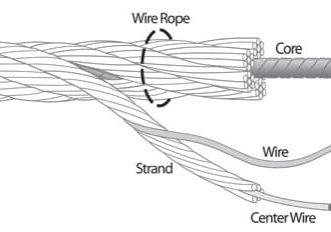Our cover photo this month seems to say it all without a word. Since the first high-rise (over 100-m-tall) building, developers have sought to climb ever higher. Kingdom Tower in Jeddah, Saudi Arabia, is a “supertall” at 3,280 ft. (1 km) and will be the world’s tallest — for a while. As much as developers want bragging rights on the world record, the title is always temporary. However, it is not just the “tallest” title in play when such buildings are planned. Scientists estimate that by 2030, the number of people living in cities will rise 30% to five billion. We can’t spread out (unless we go off planet), so we must go up.
Elevator companies, without a dramatic new technology, have been at the terminal point on building height for quite a while now. All of the OEMs are working on that technology, whether it is linear drives; higher speed; multiple cars in a hoistway; destination control; sky-lobby arrangements; or, in the case of Kingdom Tower, lighter ropes.
Our focus this month is on those suspension means. As Patrick O’Connell explains in Straight to the Top: Innovation in the World’s Tallest Tower, KONE’s UltraRope is what makes Kingdom Tower’s height possible; traditional steel rope would be too heavy. Three other articles focus on ropes, as well. In Steel Wire Rope by Louis Bialy, Miles P. Lamb and Martin Rhiner, the development of the ASME A17.6 Standard for Elevator Suspension, Compensation, and Governor Systems is discussed and related to relevant ASTM International, American Society of Mechanical Engineers (ASME) and International Organization for Standardization standards. Despite the article’s title, it also covers aramid and coated belts. In On the Safety Factor of Suspension Ropes, written by Yongqiang Shen, Junhua Shen, Rongfeng Lu, Qun Chen and Jun Ye, a suggestion is made that would clarify the subject in EN 81-20:2014, which is used in many parts of China. Finally, Elasticity Behavior of Elevator Ropes by Dr.-Ing. Andreas Franz and Dipl.-Ing. Konrad Stahr points out the importance of determining the elasticity of the ropes when the cab is under load, as this is related to elevator performance, the ride perception of passengers and even the cost of ownership.
Events covered in this issue include Asansör Istanbul 2015, a biannual event that has grown in popularity for those from Europe and the Middle East. This year, those from ELEVATOR WORLD and EW India were joined by the staff of EW Turkey (launched in the weeks after the event) at the exposition that drew more than 28,000 visitors. Hawaii hosted the National Association of Elevator Contractors 2015 Educational Conference this year. It was well attended (of course), and much education was produced. The European Lift Association (ELA) met in Paris at ELA Conference 2015, chaired for the last time by our old friend Philippe LaMalle. The conference focused on energy savings and the new European lift directives (EN 81-20 and -50). Additionally, a retirement party was given for LaMalle. Speaking of codes, John Antona’s article on Occupant Evacuation Elevators is important as we go into a new era of supertall residential buildings.
Interlift 2015 (October 13-16) in Augsburg, Germany, is approaching at the end of summer. Despite competing with more than 20 major events each year, it still commands a major audience. Suppliers from China, Turkey and Europe will bring huge booths. Face-to-face selling remains a reality of our industry.
A fascinating article by EW Correspondent Dr. Lee Gray concerns What Might Have Been the elevator system for the Empire State Building. It is clear from Gray’s article that Bassett Jones rejected several elevator plans that would have radically departed from traditional arrangements so the building could be completed in 18 months in mid 1931. Those rejected plans were pretty far out for the industry 85 years ago — double-deckers, sky lobbies, even multiple cars in a single shaft! These are the very things we are discussing now for the buildings that will pierce the clouds.
Get more of Elevator World. Sign up for our free e-newsletter.









